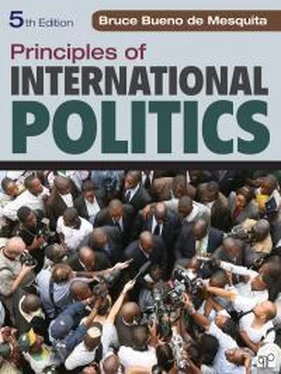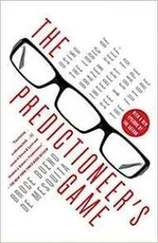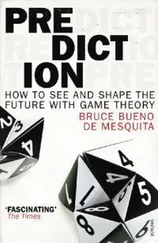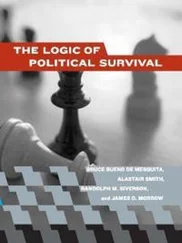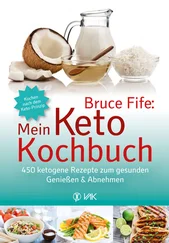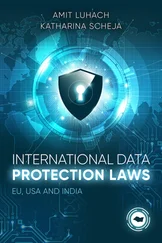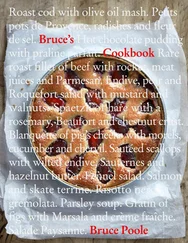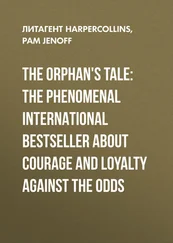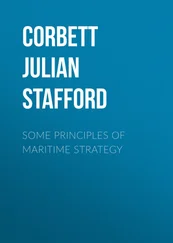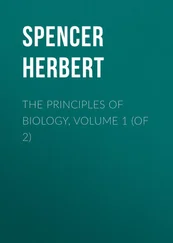Crisis Selection in Democracies and Autocracies
Diversionary War
The Resurrection Hypothesis
Pacific Dove Hypothesis
Selectorate Theory and the Conduct of War
Selectorate Reasons for War
War-Selection Calculations
Selectorate Theory and War Effort
War Effort Logic
Evidence for the War Effort Logic
War Effort, War Loss, and Leader Deposition
Summary
SECTION III. PEACE
7. How International Organizations Work or Don’t Work
The Purpose of International Rules and Institutions
The Problems of Rivalry and Nonexcludability
The Collective Action Problem
Organizational Solutions to Collective Action
Cooperation through Repeated Bilateral Interaction
Flexibility Can Be a Virtue
Information, Reputation, and the Value Added by Institutions
Multilateral Organizations and Cooperation
Inclusiveness: Trade-Offs between Regime Efficiency and Effectiveness
Alternative Views of Inclusiveness
The United Nations: Shallow Decisions or Inaction
Summary
8. Global Warming: Designing a Solution
Global Warming: A Problem of Collective Action
Collective Action and Free Riding
Seeking Agreement: Allocating Abatement Costs
Shallow Agreements = Compliance; Deep Global Agreements = Failure
Monitoring and Punishing Noncompliance with Kyoto
Flexibility
Were Kyoto’s Lessons Learned?
An Illustrative Strategy for Reduced Global Warming
Summary
9. Human Rights, International Law, and Norms
What Is International Law?
International Regimes: The Idea of Ideas and Norms
What Rights Are Recognized as Human Rights?
Is Poverty a Credible Argument against the Enjoyment of Human Rights?
Why Promote Freedom Rights? Some Useful Facts
Does International Law or Norms Improve Human Rights?
Human Rights: The Constructivist Case
The Strategic Case
Sovereignty: The Case against Human Rights
International Borders as Institutions
Breaking Down the Unitary Actor View Can Improve Human Rights
Summary
10. Free Trade or Fair: The Domestic Politics of Tariffs
Government’s Minimalist Role in Trade
Trade in Historical Perspective
An Economics Primer
Comparative Advantage
Supply and Demand
Politics of Trade: Adding Tariffs to the Mix
Trade as a Public or Private Good
Trade and Domestic Winners and Losers
The Consequence of Free Trade: Some Evidence
Summary
11. Globalization: International Winners and Losers
Globalization’s Goals
Currency Mobility
Factors of Production
Mobility of Factors of Production
Interindustry Factor Mobility
No Interindustry Factor Mobility
Specific Factor Mobility
Some Evidence
Summary
SECTION IV. WORLD ORDER
12. Foreign Aid, Poverty, and Revolution
Foreign Aid: The Problem
The Marshall Plan: A Model for Foreign Aid?
Aid Outside Europe: Not a Pretty Picture
The Aid Debate
A Third Explanation for Aid
Giving and Getting Aid
Evidence for the Aid Hypotheses
Aid, Revolution, and Democratization
Summary
13. Can Terrorism Be Rational?
Beliefs about Terrorism
Terrorism, Credible Commitments, and Strategic Dilemmas
The Government’s Credibility Problem
Solving the Credible Commitment Problem
Why Violence Might Increase after Successful Negotiations
Land for Peace: A Credible Commitment Problem
Summary
14. A Democratic World Order: Peace Without Democratization
The Democratic Peace
Some Evidence
Explanations of the Democratic Peace
Pacifying Benefits from Trying Hard
Enforcing the Postwar Peace
Democracy: A Hindrance to Democratization
Democracies and Nation Building
Autocracies and Nation Building
The United Nations and Nation Building
What Do We Expect, and What Does the Evidence Show?
Germany and Japan: Seemingly Hard Cases
The Usual Suspects: Iran, Congo, and Other Failed Cases
Summary
Appendix. Modern Political Economic History and International Politics
The Fifteenth Century
The Sixteenth Century
The Seventeenth Century
The Eighteenth Century
The Nineteenth Century
The Twentieth Century
The World through the First World War
The Interregnum between World Wars
The World War II Years
The Cold War Years
The Post–Cold War World
Summary
Bibliography
Glossary of Key Terms
Photo Credits
Citations of Key Authors
Index
Maps, Tables, and Figures
MAPS
A.1 Holy Roman, Ottoman, and Russian Empires, 1400s–1500s
A.2 Europe in
A.3 US, British, and Japanese Colonialism, Circa 1900
A.4 Divided Germany
TABLES
1.1 Regime and Cooperation: Necessary but Not Sufficient Condition
1.2 Regime and Cooperation: Sufficient but Not Necessary Condition
1.3 Regime and Cooperation: Necessary and Sufficient Condition
1.4 Regime and Cooperation: Necessary but Not Sufficient Condition
2.1 Chicken: A Stylized Depiction of the Palestinian-Israeli Conundrum
4.1 The Prisoner’s Dilemma
4.2 The Battle of the Sexes
4.3 The US and North Korean Governments: Game of Chicken
5.1 The Major Powers’ Balance of Power in 1896
5.2 Empirical Evidence for the Power Transition Theory, 1815–1980
6.1 Why Fight? Domestic Institutions and the Reasons for Conflict
6.2 Winning Coalition Size and Likelihood of War Given a Dispute
7.1 Conditions in Search of International Solutions
8.1 Global Warming National Threats
8.2 Top Ten Greenhouse Gas Emitters
8.3 Bilateral Brazilian-US Emission Reduction Game
9.1 Human Rights Treaties
9.2 Poverty and Human Rights: A Statistical Scorecard
10.1 Labor Productivity in Making Wine and Cloth
11.1 Valuing Money
12.1 Foreign Aid: Who Gives, Who Gets, and How Much?
13.1 Preference Orderings for a Terrorism Game
14.1 Change in Democracy Ten Years after a Military Intervention Compared to Cases without an Intervention (%)
FIGURES
I.1 What Is in the National Interest?
2.1 The Risk of Ouster, Time in Office, and Type of Regime 76
2.2 Governance Institutions
2.3 Standard Regime Types and Coalition and Selectorate Size
2.4 Ten Countries in 2006: W and S
2.5 Selectorate View of Policy Choices
3.1 What Changes in North Korean Nuclear Policy Can We Expect in the Next Five Years if Kim Jung-Un Retains Power in North Korea?
3.2 Selected Policy Preferences
3.3a Examples of Preferences That Are Single-Peaked
3.3b Examples of Preferences That Are Not Single-Peaked
3.4 Power Distribution by Nuclear Policy Preference
3.5 Cumulative Power: Finding the Median Voter
3.6 Preferences of a Few Key Players about the Democratic People’s Republic of Korea’s Nuclear Policy and Foreign Aid
3.7 Russia’s Preferred-To Set: Policies Russian Leaders Like Better Than the Status Quo
3.8 Win Sets for Aid Policy Versus Nuclear Policy
3.9 Compromises Acceptable or Unacceptable to the United States
4.1 Spin the Dial: Green or Not Green
4.2 Chicken in Extensive Form: United States Moves First
4.3 Solving Chicken in Extensive Form: United States Moves First
4.4a The United States Versus the Democratic People’s Republic of Korea, the United States Is Prepared to Fight
4.4b The United States Versus the Democratic People’s Republic of Korea, the United States Lacks Will to Fight
5.1 A Hypothetical Palestinian-Israeli Compromise over Land
5.2 European Great Power Alliance Commitments, 1914
Читать дальше
